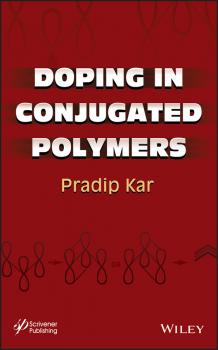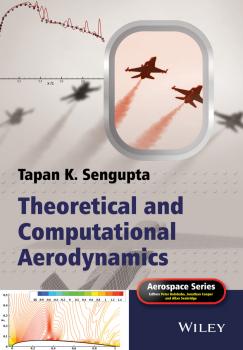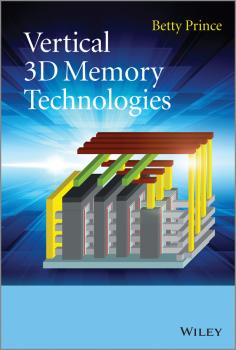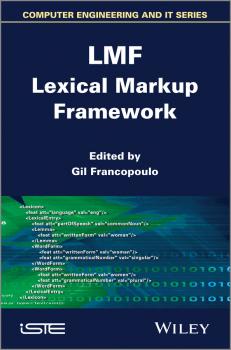Техническая литература
Различные книги в жанре Техническая литератураCloud Management and Security
Written by an expert with over 15 years’ experience in the field, this book establishes the foundations of Cloud computing, building an in-depth and diverse understanding of the technologies behind Cloud computing. In this book, the author begins with an introduction to Cloud computing, presenting fundamental concepts such as analyzing Cloud definitions, Cloud evolution, Cloud services, Cloud deployment types and highlighting the main challenges. Following on from the introduction, the book is divided into three parts: Cloud management, Cloud security, and practical examples. Part one presents the main components constituting the Cloud and federated Cloud infrastructure (e.g., interactions and deployment), discusses management platforms (resources and services), identifies and analyzes the main properties of the Cloud infrastructure, and presents Cloud automated management services: virtual and application resource management services. Part two analyzes the problem of establishing trustworthy Cloud, discusses foundation frameworks for addressing this problem – focusing on mechanisms for treating the security challenges, discusses foundation frameworks and mechanisms for remote attestation in Cloud and establishing Cloud trust anchors, and lastly provides a framework for establishing a trustworthy provenance system and describes its importance in addressing major security challenges such as forensic investigation, mitigating insider threats and operation management assurance. Finally, part three, based on practical examples, presents real-life commercial and open source examples of some of the concepts discussed, and includes a real-life case study to reinforce learning – especially focusing on Cloud security. Key Features • Covers in detail two main aspects of Cloud computing: Cloud management and Cloud security • Presents a high-level view (i.e., architecture framework) for Clouds and federated Clouds which is useful for professionals, decision makers, and students • Includes illustrations and real-life deployment scenarios to bridge the gap between theory and practice • Extracts, defines, and analyzes the desired properties and management services of Cloud computing and its associated challenges and disadvantages • Analyzes the risks associated with Cloud services and deployment types and what could be done to address the risk for establishing trustworthy Cloud computing • Provides a research roadmap to establish next-generation trustworthy Cloud computing • Includes exercises and solutions to problems as well as PowerPoint slides for instructors
Doping in Conjugated Polymers
An A-to-Z of doping including its definition, its importance, methods of measurement, advantages and disadvantages, properties and characteristics—and role in conjugated polymers The versatility of polymer materials is expanding because of the introduction of electro-active behavior into the characteristics of some of them. The most exciting development in this area is related to the discovery of intrinsically conductive polymers or conjugated polymers, which include such examples as polyacetylene, polyaniline, polypyrrole, and polythiophene as well as their derivatives. «Synmet» or «synthetic metal» conjugated polymers, with their metallic characteristics, including conductivity, are of special interest to researchers. An area of limitless potential and application, conjugated polymers have sparked enormous interest, beginning in 2000 when the Nobel Prize for the discovery and development of electrically conducting conjugated polymers was awarded to three scientists: Alan J. Heeger, Alan G. MacDiarmid, and Hideki Shirakawa. Conjugated polymers have a combination of properties—both metallic (conductivity) and polymeric; doping gives the conjugated polymer's semiconducting a wide range of conductivity, from insulating to low conducting. The doping process is a tested effective method for producing conducting polymers as semiconducting material, providing a substitute for inorganic semiconductors. Doping in Conjugated Polymers is the first book dedicated to the subject and offers a comprehensive A-to-Z overview. It details doping interaction, dopant types, doping techniques, and the influence of the dopant on applications. It explains how the performance of doped conjugated polymers is greatly influenced by the nature of the dopants and their level of distribution within the polymer, and shows how the electrochemical, mechanical, and optical properties of the doped conjugated polymers can be tailored by controlling the size and mobility of the dopants counter ions. The book also examines doping at the nanoscale, in particular, with carbon nanotubes. Readership The book will interest a broad range of researchers including chemists, electrochemists, biochemists, experimental and theoretical physicists, electronic and electrical engineers, polymer and materials scientists. It can also be used in both graduate and upper-level undergraduate courses on conjugated polymers and polymer technology.
Design of Multiphase Reactors
Details simple design methods for multiphase reactors in the chemical process industries Includes basic aspects of transport in multiphase reactors and the importance of relatively reliable and simple procedures for predicting mass transfer parameters Details of design and scale up aspects of several important types of multiphase reactors Examples illustrated through design methodologies presenting different reactors for reactions that are industrially important Includes simple spreadsheet packages rather than complex algorithms / programs or computational aid
Fats in Food Technology
Fats are present in some form in the vast majority of processed foods we consume, as well as in many ‘natural’ products. Changes in consumer behaviour, centered around an increased emphasis on healthy food consumption, mean that it is more important than ever for food scientists to understand the properties, roles and behaviours that fats play in food and in diets. Fats in Food Technology, Second Edition is an in-depth examination of the roles and behaviours of fats in food technology and the benefits that they impart to consumers. It considers both fats that are naturally present in foods (such as milk fat in cheese) and fats that have been added to improve physical, chemical and organoleptic properties (like cocoa butter in chocolate). Newly revised and updated, the book contains useful information on the market issues that have driven change and the disciplines that have helped to regulate the trade and use of fats and oils in food technology. Drawing on the recent literature as well as the personal R&D experiences of the authors, the book highlights those areas where potential efficiencies in processing and economy in the cost of raw materials can be made. Issues concerning health, diet and lifestyle are covered in dedicated chapters. This book will be useful to anyone in industry and research establishments who has an interest in the technology of fat-containing food products, including scientists in the dairy, spreads, bakery, confectionery and wider food industries, as well those involved in the production of edible oils.
Theoretical and Computational Aerodynamics
Aerodynamics has seen many developments due to the growth of scientific computing, which has caused the design cycle time of aerospace vehicles to be heavily reduced. Today computational aerodynamics appears in the preliminary step of a new design, relegating costly, time-consuming wind tunnel testing to the final stages of design. Theoretical and Computational Aerodynamics is aimed to be a comprehensive textbook, covering classical aerodynamic theories and recent applications made possible by computational aerodynamics. It starts with a discussion on lift and drag from an overall dynamical approach, and after stating the governing Navier-Stokes equation, covers potential flows and panel method. Low aspect ratio and delta wings (including vortex breakdown) are also discussed in detail, and after introducing boundary layer theory, computational aerodynamics is covered for DNS and LES. Other topics covered are on flow transition to analyse NLF airfoils, bypass transition, streamwise and cross-flow instability over swept wings, viscous transonic flow over airfoils, low Reynolds number aerodynamics, high lift devices and flow control. Key features: Blends classical theories of incompressible aerodynamics to panel methods Covers lifting surface theories and low aspect ratio wing and wing-body aerodynamics Presents computational aerodynamics from first principles for incompressible and compressible flows Covers unsteady and low Reynolds number aerodynamics Includes an up-to-date account of DNS of airfoil aerodynamics including flow transition for NLF airfoils Contains chapter problems and illustrative examples Accompanied by a website hosting problems and a solution manual Theoretical and Computational Aerodynamics is an ideal textbook for undergraduate and graduate students, and is also aimed to be a useful resource book on aerodynamics for researchers and practitioners in the research labs and the industry.
Vertical 3D Memory Technologies
The large scale integration and planar scaling of individual system chips is reaching an expensive limit. If individual chips now, and later terrabyte memory blocks, memory macros, and processing cores, can be tightly linked in optimally designed and processed small footprint vertical stacks, then performance can be increased, power reduced and cost contained. This book reviews for the electronics industry engineer, professional and student the critical areas of development for 3D vertical memory chips including: gate-all-around and junction-less nanowire memories, stacked thin film and double gate memories, terrabit vertical channel and vertical gate stacked NAND flash, large scale stacking of Resistance RAM cross-point arrays, and 2.5D/3D stacking of memory and processor chips with through-silicon-via connections now and remote links later. Key features: Presents a review of the status and trends in 3-dimensional vertical memory chip technologies. Extensively reviews advanced vertical memory chip technology and development Explores technology process routes and 3D chip integration in a single reference
Dielectric Materials and Electrostatics
An introduction to the physics of electrical insulation, this book presents the physical foundations of this discipline and the resulting applications. It is structured in two parts. The first part presents a mathematical and intuitive approach to dielectrics; various concepts, including polarization, induction, forces and losses are discussed. The second part provides readers with the keys to understanding the physics of solid, liquid and gas insulation. It comprises a phenomenological description of discharges in gas and its resulting applications. Finally, the main electrical properties of liquids and solids are presented, in order to explain the phenomena of electrical degradation, dissipation and breakdown. Contents 1. Mathematical Examination of Dielectrics 2. Physical Examination of Dielectrics Appendix 1. List of Figures Appendix 2. List of Symbols Appendix 3. List of Useful Values Appendix 4. Reminder about Dielectric Spectroscopy Appendix 5. Reminder about Transitory Currents
LMF Lexical Markup Framework
The community responsible for developing lexicons for Natural Language Processing (NLP) and Machine Readable Dictionaries (MRDs) started their ISO standardization activities in 2003. These activities resulted in the ISO standard – Lexical Markup Framework (LMF). After selecting and defining a common terminology, the LMF team had to identify the common notions shared by all lexicons in order to specify a common skeleton (called the core model) and understand the various requirements coming from different groups of users. The goals of LMF are to provide a common model for the creation and use of lexical resources, to manage the exchange of data between and among these resources, and to enable the merging of a large number of individual electronic resources to form extensive global electronic resources. The various types of individual instantiations of LMF can include monolingual, bilingual or multilingual lexical resources. The same specifications can be used for small and large lexicons, both simple and complex, as well as for both written and spoken lexical representations. The descriptions range from morphology, syntax and computational semantics to computer-assisted translation. The languages covered are not restricted to European languages, but apply to all natural languages. The LMF specification is now a success and numerous lexicon managers currently use LMF in different languages and contexts. This book starts with the historical context of LMF, before providing an overview of the LMF model and the Data Category Registry, which provides a flexible means for applying constants like /grammatical gender/ in a variety of different settings. It then presents concrete applications and experiments on real data, which are important for developers who want to learn about the use of LMF. Contents 1. LMF – Historical Context and Perspectives, Nicoletta Calzolari, Monica Monachini and Claudia Soria. 2. Model Description, Gil Francopoulo and Monte George. 3. LMF and the Data Category Registry: Principles and Application, Menzo Windhouwer and Sue Ellen Wright. 4. Wordnet-LMF: A Standard Representation for Multilingual Wordnets, Piek Vossen, Claudia Soria and Monica Monachini. 5. Prolmf: A Multilingual Dictionary of Proper Names and their Relations, Denis Maurel, Béatrice Bouchou-Markhoff. 6. LMF for Arabic, Aida Khemakhem, Bilel Gargouri, Kais Haddar and Abdelmajid Ben Hamadou. 7. LMF for a Selection of African Languages, Chantal Enguehard and Mathieu Mangeot. 8. LMF and its Implementation in Some Asian Languages, Takenobu Tokunaga, Sophia Y.M. Lee, Virach Sornlertlamvanich, Kiyoaki Shirai, Shu-Kai Hsieh and Chu-Ren Huang. 9. DUELME: Dutch Electronic Lexicon of Multiword Expressions, Jan Odijk. 10. UBY-LMF – Exploring the Boundaries of Language-Independent Lexicon Models, Judith Eckle-Kohler, Iryna Gurevych, Silvana Hartmann, Michael Matuschek and Christian M. Meyer. 11. Conversion of Lexicon-Grammar Tables to LMF: Application to French, Éric Laporte, Elsa Tolone and Matthieu Constant. 12. Collaborative Tools: From Wiktionary to LMF, for Synchronic and Diachronic Language Data, Thierry Declerck, Pirsoka Lendvai and Karlheinz Mörth. 13. LMF Experiments on Format Conversions for Resource Merging: Converters and Problems, Marta Villegas, Muntsa Padró and Núria Bel. 14. LMF as a Foundation for Servicized Lexical Resources, Yoshihiko Hayashi, Monica Monachini, Bora Savas, Claudia Soria and Nicoletta Calzolari. 15. Creating a Serialization of LMF: The Experience of the RELISH Project, Menzo Windhouwer, Justin Petro, Irina Nevskaya, Sebastian Drude, Helen Aristar-Dry and Jost Gippert. 16. Global Atlas: Proper Nouns, From Wikipedia to LMF, Gil Francopoulo, Frédéric Marcoul, David Cau
Food Safety and Food Security
Food Safety and Food Security features articles from the Wiley Handbook of Science and Technology for Homeland Security covering topics related to processing and packaging methods to protect food supply against contamination and to mitigate the consequences of contaminated foods. It discusses related detection systems as well as decontamination and disposal of contaminated foods.
Introduction to Sustainable Transports
Transport systems have to meet the mobility needs of people and commodities on all scales, from the local to the global level. Concerns about the energy, fumes and sound emissions produced, and about the safety, service quality, intelligence and lifecycle of the systems, etc. can all be included in a systemic approach. This approach can contribute to the development of sustainable solutions, for individual vehicles as well as for transport systems. Derived from an approach combining the social and physical sciences, these solutions result from the integration of physical objects, services and organizational processes, which involve several actors. Their harmonious organization contributes to the development of more virtuous transport systems for the future of urban and inter-urban mobility.









